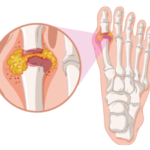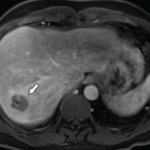Meghan Berkenstock, MD, summarized key clinical pearls related to uveitis and rheumatic diseases during a session of the 18th Annual Advances in the Diagnosis & Treatment of the Rheumatic Diseases symposium.


Meghan Berkenstock, MD, summarized key clinical pearls related to uveitis and rheumatic diseases during a session of the 18th Annual Advances in the Diagnosis & Treatment of the Rheumatic Diseases symposium.

Glucocorticoids remain a prominent part of care for many patients with SLE but can have toxic side effects; this EULAR 2022 session discussed one institution’s approach to lower the dosage.

Dana DiRenzo, MD, MHS |
The prescription is a powerful tool for a physician. As rheumatologists, we prescribe many things—drugs, physical therapy, durable medical equipment—but what about stress reduction? We are very specific about times of day to take medications and in what manner. Patients ask: With or without food? With other medications? Before or after other prescribed medications? If…

Fazila Aseem, MD, MPH, Alexander D. Jeffs, MD, Enid Y. Sun, MD, MPH, Randaline R. Barnett, MD, Courtney Blodgett, AG-ACNP, Winnie Lau, MD, Casey Olm-Shipman, MD, MS, Matthew F. Sharrock, MD, Rhonda Cadena, MD, Yueh. Z. Lee, MD, PhD, Alfredo C. Rivadeneira, MD, & Clio A. Rubinos, MD, MS |
Scleromyxedema is a primary cutaneous mucinosis characterized by a diffuse and generalized papular skin eruption of mucinous deposits throughout the upper dermis. In addition to dermatologic manifestations, scleromyxedema may involve the cardiopulmonary, gastrointestinal, renal and nervous systems. Dermato-neuro syndrome (DNS) is a rare, severe neurologic complication of scleromyxedema.1,2 The pathogenesis of DNS is unknown, but…
Background & Objectives Worldwide, osteoarthritis (OA) is a highly prevalent, chronic joint disease that causes pain, disability and loss of function. Global trends demonstrated an increase of more than 100% in years lived with disability due to OA from 1990 to 2019. However, no nonsurgical intervention exists to prevent, halt or even delay OA progression….

Renal biopsy is a valuable tool for the accurate diagnosis and management of patients with kidney involvement due to rheumatic disease. Agnes B. Fogo, MD, shared her expertise on renal pathology and insights into what rheumatologists should know, during a session at the 2022 ACR Education Exchange.

Hip and knee replacements—despite advancement in treatments for rheumatic diseases, some patients will still need to undergo these surgeries. Here are insights into the considerations, costs and complications of total joint arthroplasty.

Although the diagnosis and treatment of gout are sometimes straightforward, practitioners encounter challenges in patients with atypical presentations, as well as those with medically complex situations or refractory disease. Here, gout experts share insights into some of these scenarios. Flare in Hospitalized Patients When not contraindicated, the 2020 ACR Guideline for the Management of Gout…

Katherine Chakrabarti, MD, & Andrew Vreede, MD |
Abscesses are typically caused by infections, but some are, instead, sterile. Aseptic abscesses (AAs) are characterized by the same neutrophil-rich histopathology as infectious abscesses; however, they don’t improve with antibiotics. Rather, AAs require treatment with anti-inflammatory medications. Although relatively rare, this phenomenon is important for rheumatologists to recognize given its frequent association with underlying systemic…

Katie Robinson |
Because rheumatologists and mental health experts both treat patients with depression, anxiety, pain, disability and sleep disorders, provider cross-training may benefit patients and providers themselves. “When a patient has active psychosocial distress, this has a negative effect on their physical function. Similarly, if a patient has active physical symptoms, like a rheumatoid arthritis flare, this…